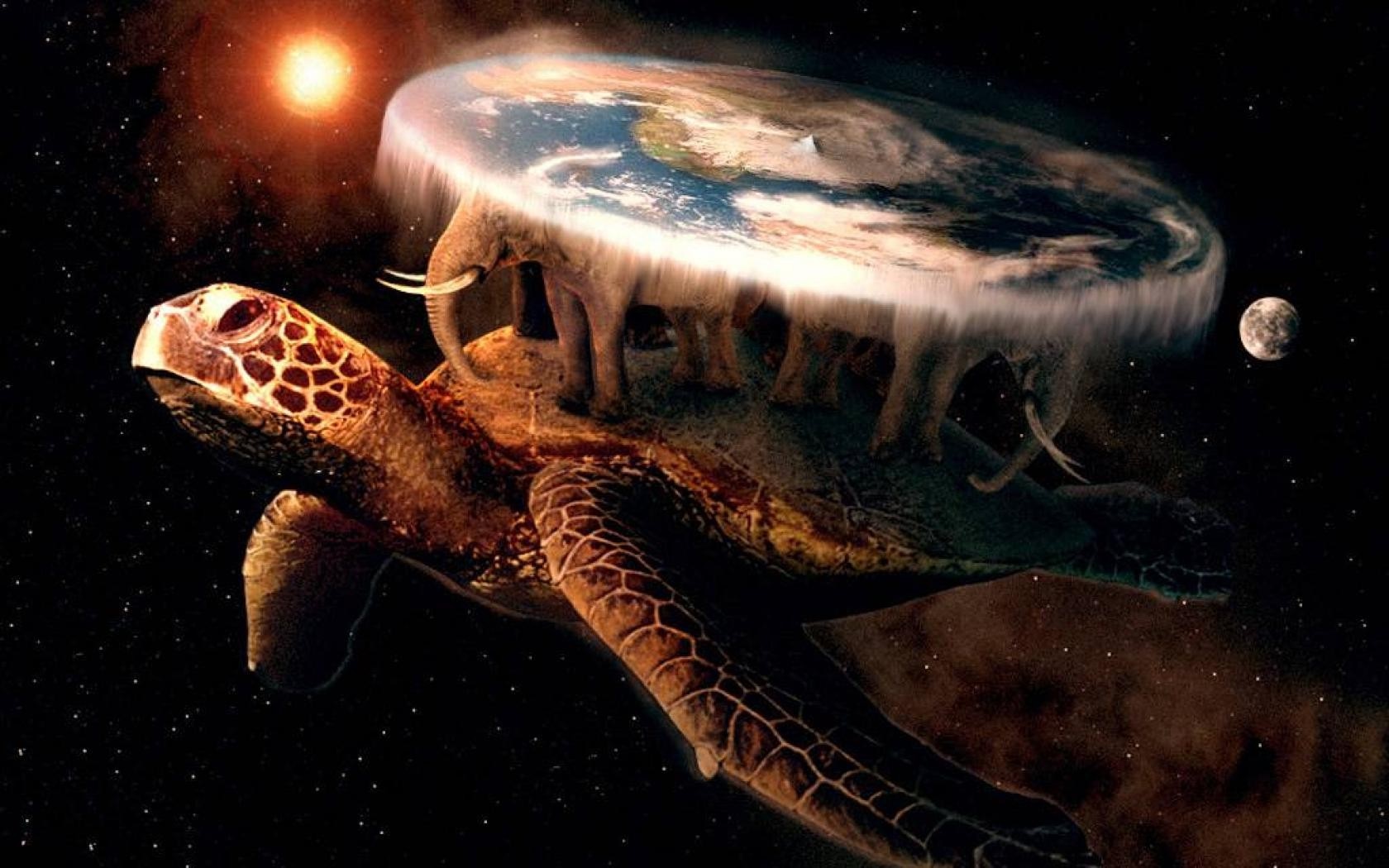"Creativity is the art of hiding your sources."
-I have no freaking idea
Someone said that. Here are three different versions, pick your favorite.
The secret to creativity is knowing how to hide your sources.
– Albert Einstein
Creativity is the art of concealing your sources.
-Nolan Bushnell
And most fittingly:
Appropriate remarks are meant to be appropriated; and originality is little more than skill in concealing origins.
—C. E. M. Joad
According to this article, C.E.M. Joad actually got there first, which makes the quote chain that much better. But none of these quite fits what I want to say, so I'll make my own.
"Creativity is the art of hiding your sources."
-Erica Smith
Terry Pratchett's long running Discworld series takes place on a flat planet carried by four elephants balanced on the back of a giant turtle swimming across space. I've never seen anything like it before or since. But in the introduction to the paperback reprint of The Color of Magic, Discworld's first installment, Pratchett claims our world is full of elephant-speckled space turtles.
 |
If I had a penny for every time someone asked me where I got the idea of the Discworld, I’d have—hang on a moment—£4.67.
Anyway, the answer is that it was lying around and didn’t look as though it belonged to anyone.
The world rides through space on the back of a turtle. It’s one of the great ancient myths, found wherever men and turtles were gathered together; the four elephants were an Indo-European sophistication. The idea has been lying in the lumber rooms of legend for centuries. All I had to do was grab it and run away before the alarms went off.
Anyway, the answer is that it was lying around and didn’t look as though it belonged to anyone.
The world rides through space on the back of a turtle. It’s one of the great ancient myths, found wherever men and turtles were gathered together; the four elephants were an Indo-European sophistication. The idea has been lying in the lumber rooms of legend for centuries. All I had to do was grab it and run away before the alarms went off.
Indeed, there are such turtles in mythologies around the world, though India has the best case for the first claim. But if you search for these creatures on google images, most results are Discworld art. If you know your Indian cosmology, maybe you get an extra smile every time the turtle is mentioned, but there's not a huge amount of Indian influence in the books. It's purely a bonus.
I regularly read query letters (letters that wannabe authors write to literary agents) for fun and education. After about three years I thought I knew all the basic pitfalls, but I've just discovered a new one.
Yesterday I came across a query that called its novel:
1. A dark retelling of one fairytale
2. A genderbent retelling of a completely separate fairytale
3, 4, 5. And inspired by the folklore of three different peoples on two continents.
I read back through the query, wondering if I'd somehow missed something, but I found no fairytale references and only a single folklore nod. The story could stand on its own.
1. A dark retelling of one fairytale
2. A genderbent retelling of a completely separate fairytale
3, 4, 5. And inspired by the folklore of three different peoples on two continents.
I read back through the query, wondering if I'd somehow missed something, but I found no fairytale references and only a single folklore nod. The story could stand on its own.
I don't know how Terry Pratchett described Discworld before he got published, but I bet it wasn't, "So I'm writing this series based an the idea from Indian cosmology." The turtles and elephants are only significant in the first two books. After that, they're simply facts of life, and does it really matter which culture they came from?
In a modern world that worries about plagiarism and appropriation, that walks in dread of not citing our sources correctly, a lot of people feel this obligation to tell everybody where their inspiration came from. But inspiration is just that-inspiration. Just because you were inspired to write a switching places story after reading The Prince and the Pauper doesn't make it a retelling. And sometimes your story is flat out disqualified from retelling status. I found a romance novel recently that the author and reviewers described as a retelling of the Book of Esther. But Esther isn't just a story. She lived and died. Here's her tomb.
.jpg) |
| Queen Esther's tomb in West Iran |
Besides, you'll be mistaken for creative.
No comments:
Post a Comment